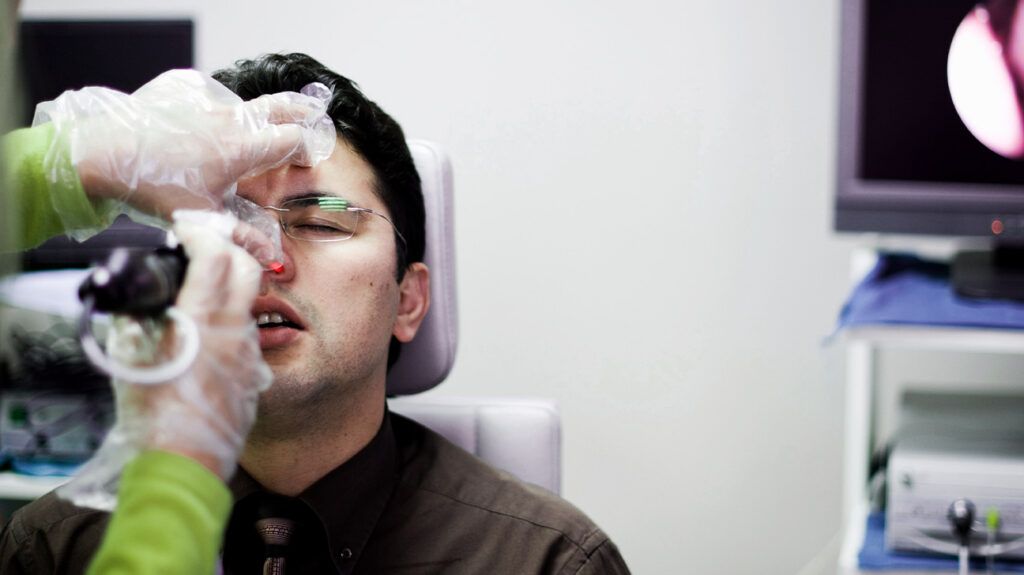Flexible laryngoscopy is a procedure doctors use to examine parts of a person’s throat by inserting a laryngoscope into their mouth or nose.
Laryngoscopy is a procedure doctors use to look at the back of a person’s throat, including their voice box, or larynx. They may also look at a person’s nasal cavity and other structures.
Healthcare professionals may use a laryngoscopy to perform a biopsy, where they obtain tissue samples for analysis.
This article explores what flexible laryngoscopy is, who may need one, and what the procedure involves. It also discusses the potential risks of the procedure and alternatives.

There are
Laryngoscopes can be flexible or rigid. Doctors may use flexible laryngoscopes to perform a direct flexible laryngoscopy. They may insert the laryngoscope into a person’s mouth or nose. Some healthcare professionals
People may have flexible laryngoscopies for several reasons.
People may need a flexible laryngoscopy if they have:
- an object or foreign body in the throat
- difficulty swallowing
- a chronic cough
- pain when swallowing
- hoarseness or voice changes
- chronic throat pain
- a sensation of a lump in their throat
- symptoms of aspiration, which is when something has entered a person’s lungs accidentally
- hemoptysis, which is coughing up blood
- difficulty undergoing a laryngoscopy with rigid laryngoscopes
- a high risk of head and neck cancer
Doctors
A flexible laryngoscopy might take as little as
Doctors typically reassure people before the procedure. Although they may be uncomfortable, it is usually:
- not painful
- quick
- very useful and gives invaluable information to the doctor
During the procedure, people usually sit upright with head support, leaning forward slightly as if they are sniffing the air. They should not cross their legs.
Doctors will spray a person’s throat with a numbing medication and a nasal decongestant beforehand. These may have a bitter taste or make the person’s throat feel unusual.
People may cough or sneeze at first as the doctor inserts the laryngoscope, but this should stop as the numbing medication begins to work.
The doctor may use a monitor or look directly down the laryngoscope. They will then ask the person to do several actions, such as:
- sticking their tongue out
- sniffing in
- blowing their cheeks out
- turning their head left and right
- counting to 10 aloud
- swallowing
- saying “eeee”
These actions help the doctor move the laryngoscope into certain areas, or to help them see into other places.
People should not swallow during the procedure unless the doctor asks them to. Swallowing can help clear the lens of the laryngoscope. After the doctor has examined a person’s throat, they will gently withdraw the laryngoscope.
How to prepare for a flexible laryngoscopy
Before a flexible laryngoscopy, people should make sure the doctor knows about any medications or supplements they are taking. This should include any known allergies to medications.
People do not normally need to stay overnight in a hospital during a flexible laryngoscopy.
Healthcare providers may ask people to stop taking blood thinning or other medications several days before the procedure. They may also ask a person not to eat or drink for several hours before the procedure.
Flexible laryngoscopy aftercare
After a person’s flexible laryngoscopy, they may feel lightheaded. They should stay seated until this passes. A person may have temporary nosebleeds or coughs that last for
People should avoid drinking or eating for at least 1 hour afterward. This is to stop food or drink from going into their lungs due to leftover anesthetic.
Doctors normally interpret laryngoscopy results just after the procedure. Some results, such as for biopsies, may take a few days or longer and require a follow-up appointment.
Possible risks or complications from a flexible laryngoscopy are rare, but
- tearing and bleeding in the nose
- a laryngospasm, in which a person’s vocal cords suddenly spasm, blocking their airway and making it difficult to breathe
- gagging
- coughing
Flexible laryngoscopy is not suitable for people with suspected epiglottitis, which is inflammation and swelling of a person’s epiglottis, a tissue flap under their tongue at the back of their throat.
It also may not be suitable if a person has croup, which is an infection of the upper airway.
Additionally, flexible laryngoscopy may not be suitable for people with certain conditions, such as:
- stridor, in which a person has noisy breathing due to obstructed airflow through a narrowed airway
- angioedema, or swelling of the deeper layers of a person’s skin due to a buildup of fluid
- active epistaxis, or when a person is bleeding from their nose
- an uncontrolled bleeding condition
- coagulopathies, or conditions that affect how a person’s blood clots
With some of these conditions, doctors may still perform a flexible laryngoscopy if it is essential. If so, they will use a controlled environment, such as an operating room. They will ensure a person skilled at difficult airway management and surgical techniques is present.
Doctors
A flexible laryngoscopy may only allow doctors a limited view of parts of a person’s larynx and other throat areas. They may use another procedure to examine these regions, such as a bronchoscopy, which is a procedure where a doctor uses a thin, flexible tube with a light and camera to
Another procedure a doctor
Flexible laryngoscopy is a procedure in which a doctor uses a flexible tube with a light and camera to inspect parts of a person’s throat. They may use it to obtain tissue samples for a biopsy.
During a flexible laryngoscopy, doctors gently insert the laryngoscope device into a person’s mouth or nose to examine their throat. They use numbing medications to ensure the procedure is as painless as possible.
As with all medical procedures, flexible laryngoscopies may have some risks and may not be suitable for people with certain health conditions.
